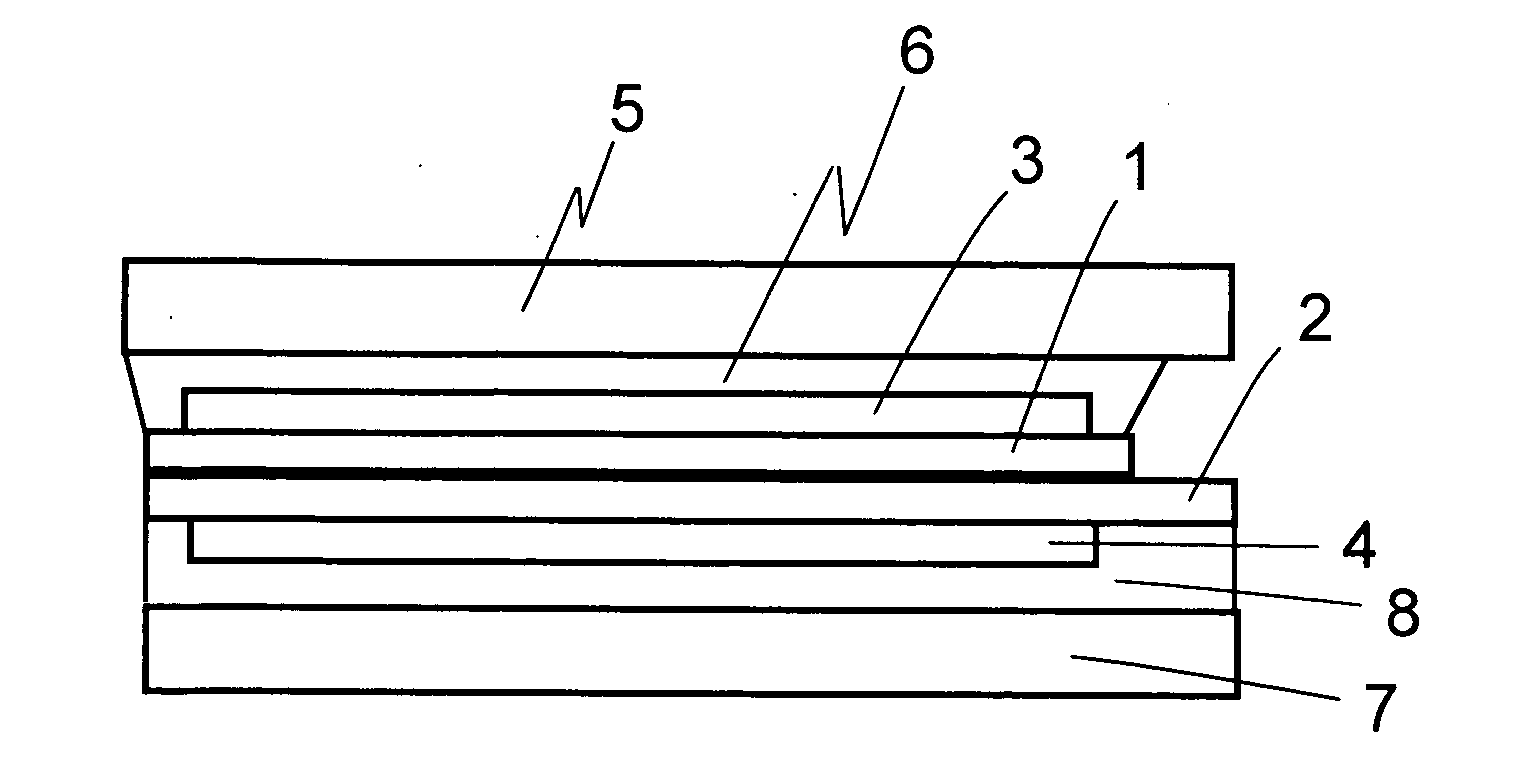Display device
a technology of a display device and a display panel, which is applied in the direction of identification means, instruments, substation equipment, etc., can solve the problems of long-term studies conducted, frequent cracks in the glass, and inability to prevent cracks, so as to reduce the thickness, and increase the strength of the liquid crystal panel
- Summary
- Abstract
- Description
- Claims
- Application Information
AI Technical Summary
Benefits of technology
Problems solved by technology
Method used
Image
Examples
first embodiment
[0029]FIG. 1 schematically illustrates a cross-sectional structure according to a first embodiment. A liquid crystal panel has a structure in which a liquid crystal layer is held in a gap between a transparent substrate 1 provided on a display surface side and an opposing transparent substrate 2 provided on a back surface side. On the transparent substrate 1, a color filter and a transparent electrode are formed. On the opposing transparent substrate 2, a TFT array is formed. A drive signal is output from a driver IC (not shown) to drive the liquid crystals. Light for which its vibration direction is selected at an upper polarizing plate 3 bonded to the transparent substrate 1 on the display surface side and a lower polarizing plate 4 bonded to the opposing transparent substrate 2 on the back surface side is incident from a back light (not shown). The vibration direction of the light is changed in the liquid crystal layer. Display is performed based on whether the upper polarizing p...
second embodiment
[0033]FIG. 2 schematically illustrates a cross-sectional structure of a display device according to a second embodiment. The second embodiment employs a structure in which sapphire 9 having a thickness of 0.3 mm is further bonded using an optical adhesive 10 to the tempered glass 5 provided on the display surface side of the display device according to the first embodiment. A refractive index of sapphire is 1.76, which is larger compared with 1.54 of glass. For this reason, in view of transmittance, it is preferable that an AR film formed by sputtering a material having a lowered refractive index be formed on a surface of the sapphire, or alternatively that a refractive index of the optical adhesive 10 be set to an intermediate level between those of sapphire and glass.
[0034]Sapphire has a higher Young's modulus than that of soda-lime glass, and therefore is resistant to cracks even when being thinned. According to a falling ball test, the same strength characteristics are obtained ...
third embodiment
[0037]FIG. 3 schematically illustrates a cross-sectional structure of a display device according to a third embodiment. The third embodiment employs a structure in which tempered glass 11 having a satin finished surface is used on the back surface side of the display device according to the first embodiment. In a structure in which a back light is provided behind a liquid crystal panel to illuminate the liquid crystal panel, the back light includes a light guide plate and a light source, and light from the LED light source is introduced from a side surface of the light guide plate to achieve surface emission by means of a reflection pattern formed on a front surface of the light guide plate. In this case, in order to increase luminance, two prism sheets each having lenses continuously formed thereon in one direction are arranged on an emission surface so that the directions of the lenses are orthogonal to each other, and conventionally, a diffusion plate is further arranged thereon....
PUM
| Property | Measurement | Unit |
|---|---|---|
| thickness | aaaaa | aaaaa |
| thickness | aaaaa | aaaaa |
| thickness | aaaaa | aaaaa |
Abstract
Description
Claims
Application Information
 Login to View More
Login to View More - R&D
- Intellectual Property
- Life Sciences
- Materials
- Tech Scout
- Unparalleled Data Quality
- Higher Quality Content
- 60% Fewer Hallucinations
Browse by: Latest US Patents, China's latest patents, Technical Efficacy Thesaurus, Application Domain, Technology Topic, Popular Technical Reports.
© 2025 PatSnap. All rights reserved.Legal|Privacy policy|Modern Slavery Act Transparency Statement|Sitemap|About US| Contact US: help@patsnap.com


